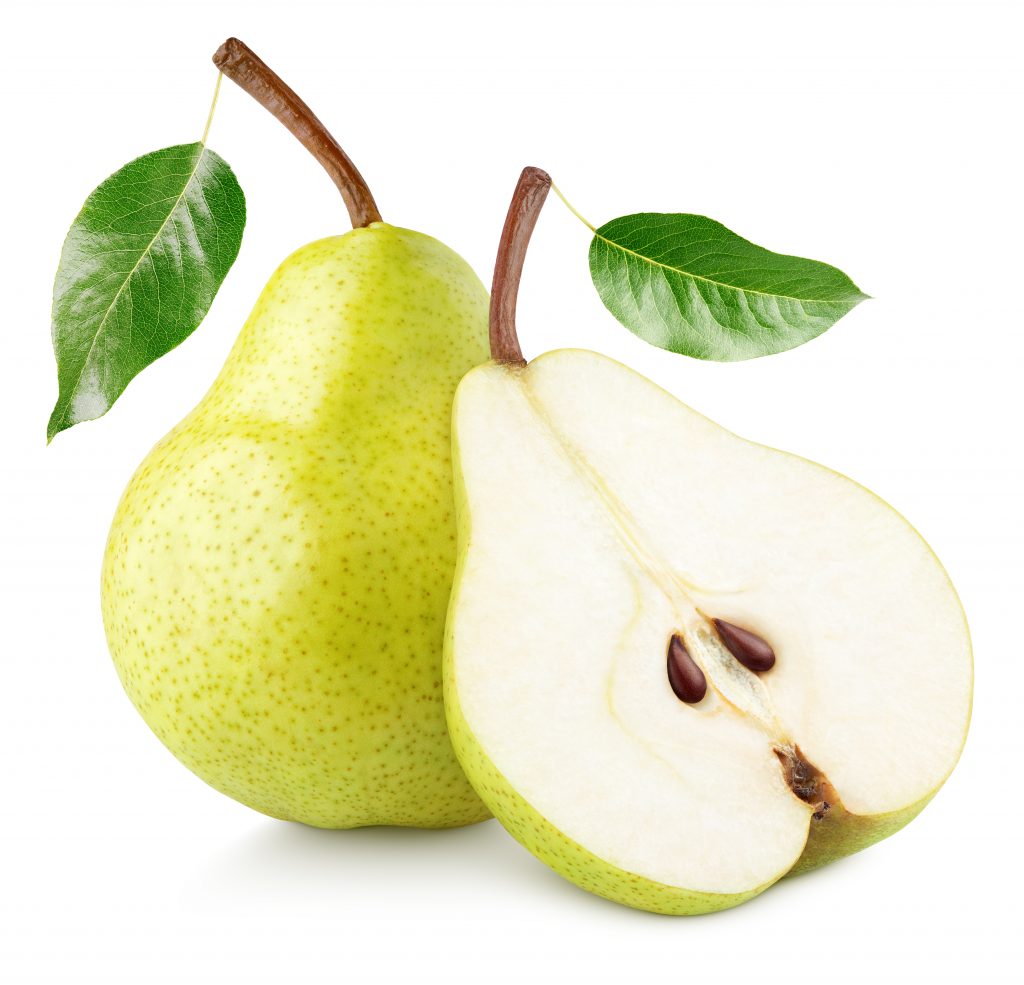Pears are the August Harvest of the Month

What did the pear say after meditation? “I feel re-peared.” Pear jokes aside, meals and snacks are sweeter with this antioxidant-rich fruit.
You can include pears in salads, soups, jams, cobblers, grilled cheese and more or, you can eat a pear plain like an apple. Learn more about this delicious fruit and the great recipes you can make with it.
During the month of August, you may find pears used more abundantly in a variety of recipes from our cafeterias.
Did You Know?
- Many pear trees grow up to 40 feet tall.
- There are more than 3,000 varieties of pears.
- Pears prefer volcanic soil, which is why most of the pears sold in the U.S. are from California, Oregon and Washington.
Try These Delicious Recipes
Baked Pears
Healthy Pear Crisp
Roasted Sweet Potatoes and Pears
How to Pick and Store Pears: Many of the pears sold in grocery stores are not ripe enough to eat right away. This is because pears ripen best when they’re off the tree. When ripe, Bartlett pears are yellow; other varieties of pears don’t change color, but will soften and indent slightly when pressed on. Place pears on the counter to ripen. Once ripe, store pears in the fridge for about a week.
Making them Kid-Friendly: A sliced pear and cheese cubes make a classic lunchbox snack. For kids who don’t like the texture of pears, here are other ways to eat pears:
- Pear crisps: Similar to apple crisps, you can bake pears into crisps for a crunchy snack.
- Pear flapjacks: Diced pears are great in flapjacks and pancakes.
- Pear sauce: Just like applesauce, pear sauce is a refreshing way to eat more fruit.
Nutrition and Health Benefits: Full of fiber, a pear can satisfy a sweet tooth and an appetite. It’s also a good source of vitamin C and vitamin A.
| Calories: 102 | Protein: 1g |
| Total Fat: 0.2g | Calcium: 1% |
| Total Carbohydrate: 5g | Iron: 2% |
| Dietary Fiber: 6g | Potassium: 0mg |
| Sugars: 17g | Vitamin C: 26% |
| Sodium: 0mg | Vitamin A: 20% |
Serving Size: 1 medium pear




